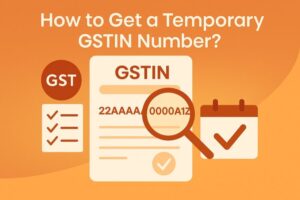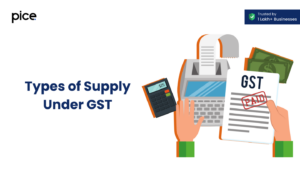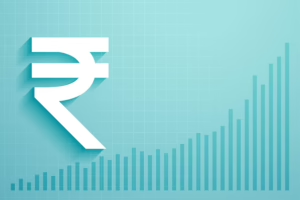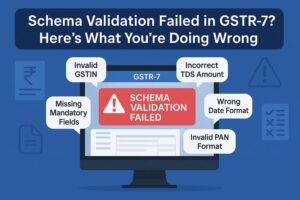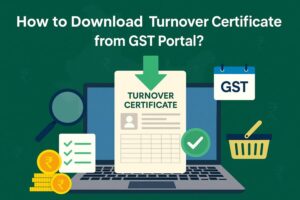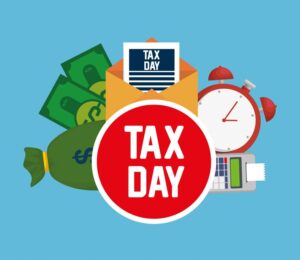How to Draft a GST Late Fee Waiver Request Letter?
- 4 Feb 25
- 8 mins

How to Draft a GST Late Fee Waiver Request Letter?
Key Takeaways
- GST late fees apply for delayed returns, calculated daily based on turnover.
- Maximum late fee for GSTR-1 is ₹500 for nil filers and varies for others.
- Waivers and relaxations are available for specific return periods.
- Late fees must be paid separately and cannot be adjusted via ITC.
- Businesses can request a late fee waiver under certain conditions.
The Goods and Services Tax (GST) system revolutionized India's tax collection structure, substituting a number of indirect taxes with one single payable tax. As elaborate and comprehensive as the system is, there are certain rules and regulations in place to keep the process running smoothly and transparently. The GST council has introduced a late fee system, based on which a late penalty will apply upon delays in filing GST returns.
The GSTR-1 is a monthly or quarterly return that records all the sales (outward supplies) of a registered taxpayer. Refer to this blog for updated information regarding the GST late fee waiver request letter, obligation, and the revised late fee structure.
Statutory Aspect of GST Late Fees
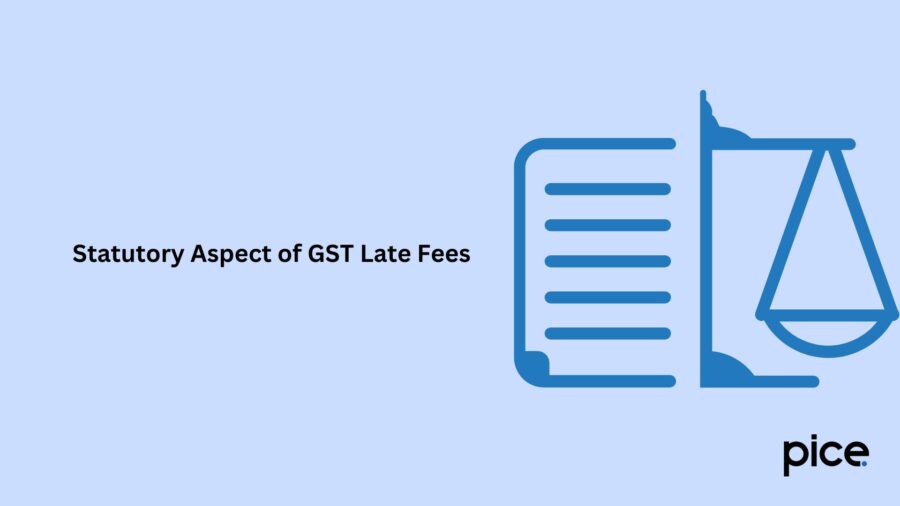
The statute, which governs GST laws, imposes a penalty or a late fee on businesses that fail to submit their GST returns within the predetermined period. When a GST-registered company violates the established deadlines for filing GST returns, they are subject to this late charge for late payment. A prescribed late amount is applicable for each day of delay in payment.
Note that it is illegal for a taxpayer to pay the applicable late fee with the help of the Input Tax Credit (ITC) as part of the electronic credit ledger.
A late filing fee is applicable for all those who fail to file their nil returns. An individual is needed to pay a late fee even if they cannot present any records of sales or transactions or have no GST liability to report via the GSTR-3B. The applicable late amount is calculated on the basis of the number of days that have gone by since the initial due date of filing.
The due dates set aside for GSTR-1 are based on your aggregate turnover accounts. So, companies that have had sales of up to ₹5 crore are given the option to file quarterly returns. This is done under the QRMP scheme. They are due by the 13th of the month that follows the respective quarter.
On the other hand, taxpayers who are not registered under the QRMP scheme or have a total turnover of over ₹5 crore on their tabs are required to file the return for every month, before or on the 11th of the following month.
Late Filing Fees and Nil Returns
The maximum late fee has been reduced for the GSTR-1 returns. These amendments were published post the 43rd GST Council meeting through CGST notifications (19/2021 dated 1st June 2021 for GSTR-1 returns).
Previously, the maximum late charge was higher. However, if the GSTR-1 return is not submitted on time now, a maximum fee of ₹500 will be levied per return (₹250 each for CGST & SGST).
The maximum late fee associated with GSTR-1 as well as GSTR-3B, apart from the charge for annual turnover applicable as specified in the table below:
| Applicable Charge | Circumstance |
| A maximum late fee of ₹2,000 per return; ₹1000 each for CGST and SGST | If the annual income for the preceding fiscal year was up to ₹1.5 crore |
| A maximum late fee of ₹5,000 per return; ₹2,500 each for CGST and SGST | If the annual turnover amounts to a number between ₹1.5 crore and ₹5 crore |
| A maximum late fee of ₹10,000 per return; ₹5,000 for each component of CGST and SGST | If the annual revenue is more than ₹5 crore |
| A maximum late fee of ₹500 | If the taxpayer fails to submit a return |
| A maximum late fee of ₹2,000 | If the taxpayer fails to file a return |
| A maximum late fee of ₹2,000 Note: The late charge per day which can be charged was reduced by the CGST regulation 22/2021 (dated 1st June 2019). It was reduced from ₹200 to ₹50 per day of delay, for each return. The amendment was made as a response to the maximum late fee levied being ₹2,000. | Delayed TDS filing under the GST |
Types of Returns Subject to Late Fees
As we have already discussed, GST laws specify the imposition of a late fee that is chargeable upon the delay in filing of GST returns. It serves as a monetary penalty for missing the GST return filing due date. The authority-wielding department has prescribed late fees that are charged for every day of delay, starting from the prescribed due dates.
So, the late fee for overdue payments shall depend upon the number of days of delay since the established due date.
Here is a list of returns, the delay in filing of which will result in the incurring of late fees:
· GSTR-1
· GSTR-3B
· GSTR-4
· GSTR-5
· GSTR-5A
· GSTR-6
· GSTR-8
· GSTR-7
· GSTR-9
Revised Late Fee Structure
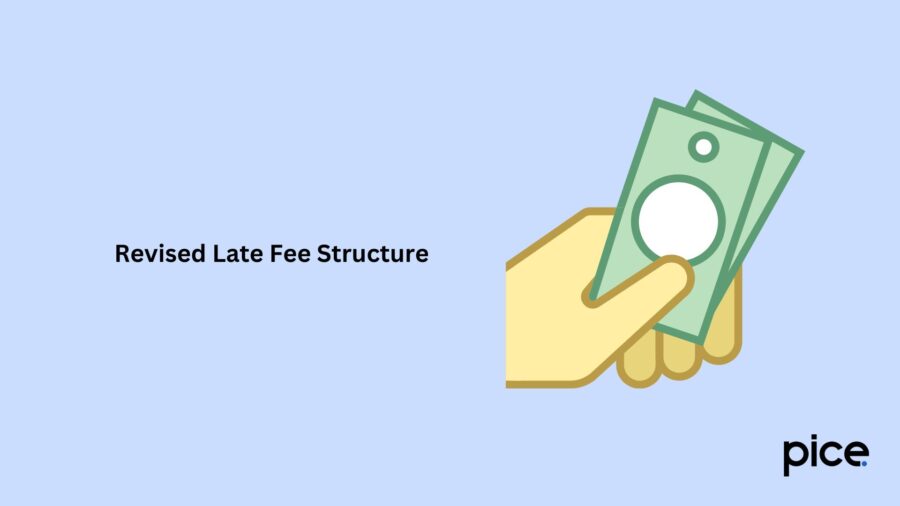
The revised late fee structure for GSTR-1 is as follows:
| Return period(s) Applicable | Late Fee Applicable |
| Monthly return filers starting from June 2021/ QRMP taxpayers from quarter-ended June 2021 onwards | The maximum late fee was reduced. It is fixed at ₹500 per return, for each nil filer. For other tax-paying persons, it is fixed according to turnover slabs |
| Months of March 2020 – June 2020; Quarter ending 31st March 2020 and 30th June of the year 2020 | Late fees are completely waived if the concerned person files before the specified dates between July and August 2020 |
| Months of March 2020 – April 2020; Quarter ending 31st March 2020 | Late fees are completely waived off concerned persons file before the specified dates between June-July 2020 |
| July 2017 to November 2019 | Late fees are completely waived if concerned taxpayers file between the period of 19th December 2019 and 10th January 2020 |
| July of 2019 | Late fees are completely waived off for taxpayers in certain districts of flood-affected States as well as all the districts of Jammu & Kashmir |
| July 2017 to September 2018 | Late fees are completely waived off |
| Starting July 2017 | Late fees are reduced |
Late Fee Slabs
The maximum chargeable amount for late filing is determined by the annual turnover number. The late fee slabs apply as follows:
· If a business has an annual income of up to ₹1.5 crore, the maximum late fee charge of ₹2,000 per return shall apply, which means ₹1,000 each for CGST and SGST respectively.
· If a business has an annual turnover between ₹1.5 crore and ₹5 crore, the maximum late fee that can be charged is limited to ₹5,000 per return. This equals ₹2,500 each for CGST and SGST, respectively.
· If a business has an annual turnover exceeding ₹5 crore, it may have to pay a late amount up to ₹10,000. The breakdown reveals payment of ₹5,000 each for CGST and SGST respectively.
Making a GST Late Fee Waiver Request

A business can specifically request a waiver of late fees for GST returns. This is applicable for GST returns filed post-August 2021. The waiver request is supposed to extend relief to the smaller and legitimate taxpayers, being more considerate of the potential economic challenges that may have posed as challenges.
Relaxations to certain degrees can be requested. They will be implemented for the return periods between August 2020 and March 2021 by waiving the late fees for delayed GST return filing.
Conclusion
It is essential for businesses in this thriving Indian economy to understand the implications of GST late fees, their relevant structure, and the concept of requesting a waiver so they can stay in compliance with the GST regulations. A significant takeaway from this should be the importance of filing returns on time in order to avoid late charges and piling of interest.
Timely payment of taxes alongside compliance with set GST rules are two essential steps towards concretizing your financial stability in the long term. With adherence to tax laws, avoid any extra costs or penalty charges.
💡 If you want to streamline your payment and make GST payments, consider using the PICE App. Explore the PICE App today and take your business to new heights.
 By
By 





